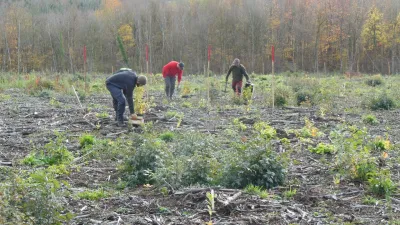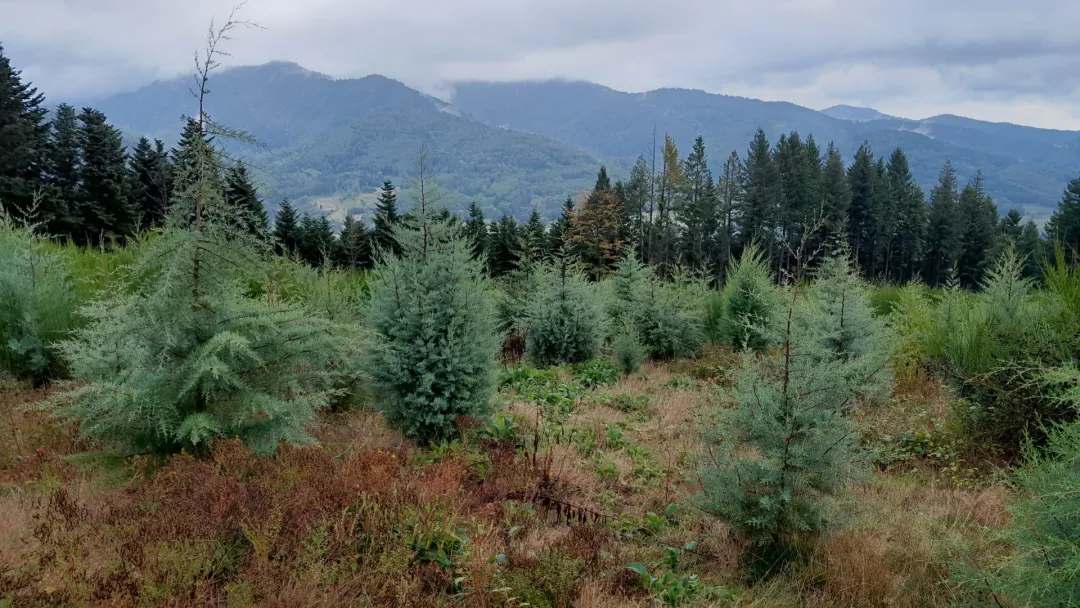General information
RDP Priority
- P1. Knowledge transfer and innovation
RDP Focus Area
- 1A: Innovation & cooperation
RDP Measure
- M16: Cooperation
Beneficiary type
- Operational group
Summary
In 2019, the French National Forest Office launched “FuturForEst”, an initiative that trials the introduction of climate change-resilient tree species in the Grand Est Region to sustain forests that produce wood for construction. The project oversaw the testing of ten species in 69 test areas in the Region, gathering data on seed evolution in order to recommend species that guarantee forest growth.
Results
- The identification of ten species for trial according to their specificities in terms of climate resilience and growth conditions.
- The creation of ‘techno-forestry itineraries’ for each of the species, an overall transferable methodology, and a national network for disseminating the project results.

Promoter
National Forest Office– Grand Est territorial direction
* The Project promoter/beneficiary is an EIP-AGRI Operational Group ©
Funding
RDP support: 1 889 388 (EUR)
EAFRD: 1 360 359 (EUR)
National/Regional: 529 029 (EUR)
Ressourcen
Context
As climate change continues to impact forest growth, the diversification of species is seen as a key step towards greater climate change resistance in forest management. In the Grand Est region of France, the Office National des Forêts (National Forest Office) has been leading an ambitious initiative to test the integration of new species that can adapt to a variety of climatic constraints (drought, cold, humidity, etc.).
The ‘FuturForEst’ project (2019-2024) has tested ten species from different climatic contexts (Turkey, the United States, the Balkans, etc.) on 69 plots ranging from one to two hectares across the Grand Est region. The project led to the development of a number of tools for forestry technicians to help them better anticipate the impact of climate change on native forest species and support the integration of new species. The results of this work anticipate climate change impacts in the region and have been disseminated across other French regions through the national network ‘Islets of the future’. The project was funded by the EAFRD, through the European Partnership for Innovation scheme.
Objectives
The objectives of the project were to:
- test new species of trees to increase climate change resilience in forest areas;
- experiment with new species that can be introduced to sustain the production of construction wood in the Grand Est Region;
- create a national network for experimentation concerning the introduction of new species, to enable the dissemination of project findings.
Activities
Project activities included:
- identifying tree species - the first step of the project was to identify species that could adapt to different climate conditions. About ten species, all imported from different countries, were selected to be tested in the project. Among them, Incense Cedars (able to resist drought); Arizona Cypress (can thrive in poor quality soil); Macedonia Pine; Sequoias, etc.
- experimenting - the second step was to introduce these species in private and public forest areas across the Grand Est Region. Testing was carried out on plots of one to two hectares to get a clear idea of the development of a population of these species. From 2021-2022, about 69 testing zones were set up, with high-density plantations of around 2 000 plants per hectare. These were measured throughout the project.
- identifying techno-forestry itineraries - the tests measured the resilience capacity of each species across two parameters: the survival rate (over one, three and five years) and the height of the trees. From this, silvicultural itineraries were drawn up for the technicians to outline the specific resistance qualities of each species and ensure that they do not become invasive.
- designing a transferable methodology - the methodology used in the project was shared with other stakeholders in France. To disseminate the results, a network of forestry stakeholders was created at the national level. The National Forest Office has since developed the ‘Islets of the future’ (Îlots d’avenir) network to test new species in different regions of France.
Main results
The project led to a variety of results:
- full profiles of the ten tested species from different areas (USA, Balkans, etc.).
- a ‘techno-forestry itinerary’ for each of the species.
- a transferable methodology shared via a national network.
Key lessons
- The project encountered some challenges regarding promising tree species in Iran and Algeria. Due to geopolitical issues that prevented travel and to public health regulations concerning imports, the team were not able to include these varieties in the testing process. Additionally, several seeds did not develop as expected during the implementation phase, as they were destroyed by pests or perished during the drought in 2022.
- Although many of the tested species have already been introduced in areas of France, even as far back as the end of the 19th century, this project was an important opportunity to collect and compare data with the specific goal of mitigating the effects of climate change. Ongoing observations of these species, over the next 20 to 30 years, will provide a detailed and concrete view of their evolution that will help future generations manage forests sustainably.
Tissaux Jean-Claude

